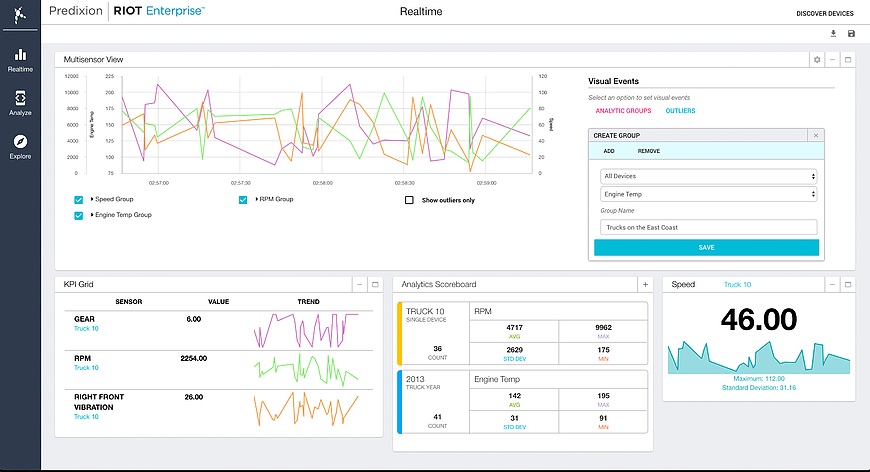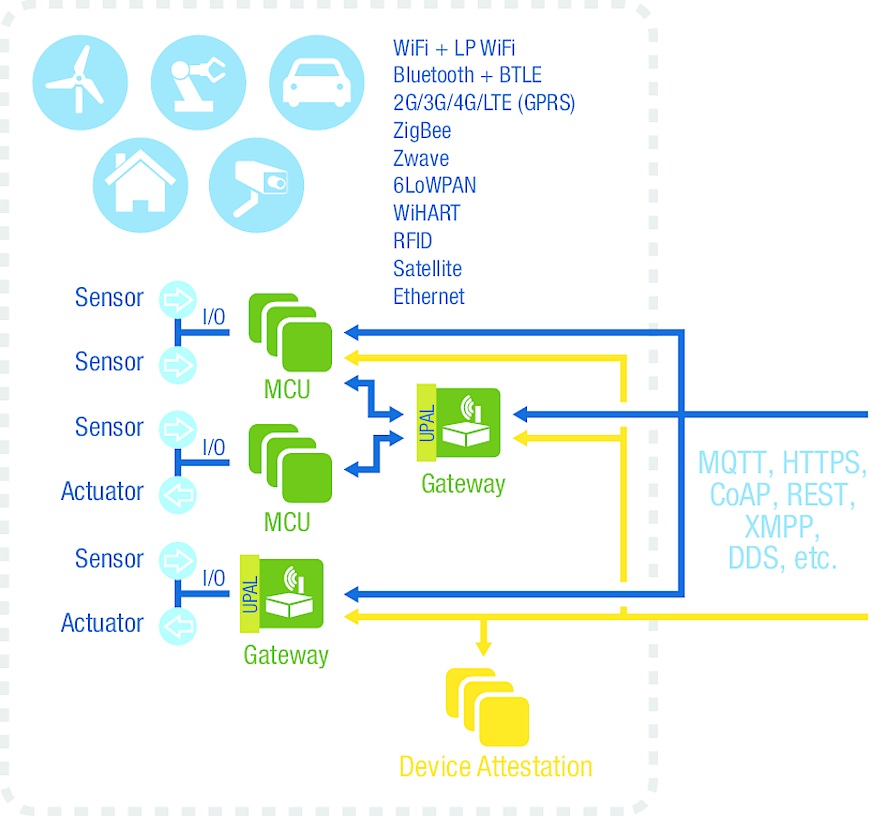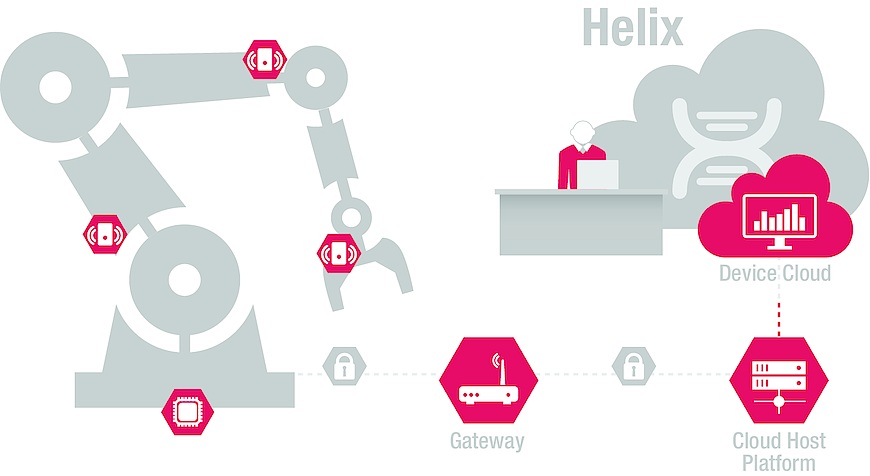Making the Fog Smarter
According to the 2016 ABI Research report, “Edge Analytics in IoT,” organizations currently use only 10 percent of the data generated by the Internet of Things (IoT), and an even smaller amount undergoes deeper analysis. Nevertheless, many organizations continue to target the cloud as the assumed, eventual data collection point and treat all this information as a big data problem.
Such an approach ignores two facts. First, many IoT solutions require real-time business intelligence (analytics and decisions as events happen) and cannot afford the latency inherent in cloud analytics solutions. Second, according to a second ABI report, “Internet of Everything Market Tracker,” the IoT will incorporate 40 billion connected devices by 2020. Such explosive growth will overwhelm cloud resources and require new IoT architectures designed to push analytics to the fog layer.
In this article, we consider an advanced edge-based solution that performs analytics using intelligent edge devices and gateways, and then aggregates the results in cloud. We examine how this innovative analytics architecture creates an effective solution for identifying issues and taking real-time action. We discuss the performance, scalability, security, and connectivity advantages of running on Intel® IoT Gateway Technology. And we look at the role Wind River Helix* Device Cloud plays in helping manage the data, devices, and systems used in this solution.
The Shortcomings of a Cloud-only IoT Analytics Approach
Predictive maintenance is a valuable IoT application. The ability to use IoT analytics to prevent unscheduled maintenance and mitigate failures before they happen offers tremendous opportunities to save money, minimize system downtime, and prevent service disruptions.
A major challenge in using IoT analytics for predictive maintenance is managing the massive amounts of data generated by IoT devices. The “Edge Analytics in IoT” report cited earlier predicts that data captured by IoT-connected devices will grow to more than 1,600 exabytes (EB) in 2020, up from 233 EB in 2014.
To put this in perspective, consider that University of Southern California data scientists calculated in 2011 the world’s data storage capacity at just 295 EB. While this capacity constantly increases, our ability to collect data is growing faster, placing a tremendous burden and cost on cloud-only architectures. An IDC press release, “IDC Reveals Worldwide Internet of Things Predictions for 2015,” predicts that by 2018, 50 percent of IT networks will transition from having excess capacity for IoT devices to being network-constrained.
The cloud model presents other problems for predictive maintenance deployments. Trucking companies operating on thin margins need to throttle the cellular connection as much as possible to reduce cost. Continuous IoT connections for wind farms, oil and gas drilling platforms, agricultural equipment, and other remote deployments are equally challenging and expensive propositions.
The Power of Edge Analytics
The solution for reducing cloud-only processing dependency can be found at the data sources themselves. It’s edge analytics.
Analytics software companies like Predixion Software observe that many IoT solutions fail to take advantage of all the processing capacity that Moore’s Law has brought to edge devices and gateways. The processing power of these devices and gateways rivals personal computers sold just a few years ago. Even low-power-consuming chips such as Intel® Quark™ processors can run visual edge analytics software like Predixion RIOT*.
One critical aspect in edge discussions today is what precisely defines analytics at the edge. Predixion defines edge analytics as actual processing on the edge device – not just collecting and storing data at the edge and then transmitting it to the cloud for processing (Figure 1).

Figure 1. As opposed to cloud-based analytics (left), Predixion defines edge-based analytics (right) as actual processing on the edge device – not just collecting data at the edge and transmitting it to the cloud for processing.
Performing analytical processing at the edge ensures insight is achieved in real time. Edge analytics also helps free connected assets from bandwidth constraints, remote connectivity challenges, and government mandates that prohibit data sharing in the cloud. Furthermore, edge analytics help preserve cloud resources for the big data analytics needed for executive-level insight.
A Comprehensive Fog Solution
Predixion RIOT is an advanced family of visual edge analytics software that runs on edge devices and gateways to enable an intelligent fog layer for predicting adverse events and failure for a range of assets. Using Predixion RIOT lets organizations move away from reactive maintenance on assets to predictive maintenance based on real-time, edge-driven visual analytics.
Predixion RIOT is simple to use and provides immediate value to customers right out of the box. RIOT’s one-click analytics deployment enables ODMs and OEMs to add streaming analytics to IoT devices without the need for data scientists to create predictive models.
The Predixion RIOT family of products supports connected, partially-connected, and disconnected environments so decisions can be made in real time with loosely connected or intermittent network communication. The product family includes three solutions:
- Predixion RIOT Nano* – An embedded edge analytics platform for small-footprint devices. Used on these devices, RIOT Nano provides real-time visual edge analytics and pattern detection.
- Predixion RIOT One* – An embedded Java-based edge analytics platform. Deployed on gateways, RIOT One performs real-time visual edge analytics and pattern detection on data from any connected IoT device.
- Predixion RIOT Enterprise* – A cloud-based edge analytics platform. Implemented in the cloud, RIOT Enterprise delivers a view of all real-time visual analytics performed by connected edge devices and gateways.
Designed for immediate business intelligence, Predixion’s lightweight micro-service architecture enables insight at every layer of an IoT value chain – on the smallest device, at the gateway level, and in the cloud. Whether a platform uses an RTOS like VxWorks, a Linux* distribution, or Microsoft Windows* 10, Predixion RIOT runs in it.
An Energy Industry Example
Electric vehicles (EVs) are emerging as a popular alternative to traditional carbon fuel-based vehicles. A limiting factor is the lack of readily available charging stations. A Predixion customer, FreeWire Technologies, is transforming delivery of energy to EVs through its Mobi* Charger (Figure 2).

Figure 2. The Mobi Charger brings a charge to the vehicle by packing recycled batteries into a compact cart that can be wheeled to vehicles in parking lots and garages.
These mobile battery-charging units are rolled directly to vehicles for on-premise charging. The Mobi Chargers can be a pay-per-charge service or provided as a free service to incentivize green practices. Mobi’s technology utilizes reconditioned EV batteries to provide fast-charging stations without impacting the grid.
Mobi Chargers recharge overnight at off-peak hours and then discharge during the day when rates are highest, thus reducing consumer energy costs. Because each Mobi unit must be monitored and highly mobile, it is attached to a wireless gateway that communicates with the FreeWire Cloud Management platform. The gateway allows the FreeWire operations team to efficiently monitor and deploy charging units.
An IoT device, the Mobi Charger sends data to a cloud platform. The data produced from each unit is mined to derive insights about charging behavior. With enough data, FreeWire can predict how much charge a specific vehicle will need on a particular day of the week or month, and, with an aggregated view across all electric vehicles at a particular location, predict total expected demand as well. When combined with detailed information on time-of-use rates, the charging and discharging of Mobi Chargers can be optimized to keep vehicles charged and customer energy bills as low as possible.
In this environment, Predixion RIOT supplies the ideal solution. Instead of streaming raw data from each charger to the cloud, RIOT runs analytics in real time on a gateway based on Intel IoT Gateway Technology. The actionable insights generated from the analytics enable timely and meaningful views of events and anomalies (Figure 3).

Figure 3. Predixion RIOT's analytics enable timely and meaningful views of events and anomalies across a fleet of mobile chargers.
FreeWire receives real-time visual analytics to review charge performance and can detect anomalies through complex pattern detection and filtering. When anomalies are detected, RIOT correlates them in the cloud against real-time and historic data. The results guide repair recommendations that enable Mobi to avoid service interruptions and warranty issues.
A Gateway Technology for Turning Edge Data into Immediate Value
Businesses looking to implement Predixion’s RIOT-based IoT solutions will find a growing number of embedded computing companies basing their gateway designs on Intel IoT Gateway Technology. These solutions provide leading performance, connectivity, and security for intelligence at the edge (Figure 4). The gateways enable real-time analysis and tighter, more efficient process controls, while reducing data transmission costs.

Figure 4. Solutions based on Intel® IoT Gateway Technology provide leading performance, connectivity, and security for intelligence at the edge.
With support for multiple operating systems and processor performance levels, solutions based on Intel IoT Gateway Technology meet the need for a broad range of applications. Gateways using this technology scale with Intel Quark, Intel® Atom™, and Intel® Core™ processors to cover a range of workload requirements both today and in the future.
These processors and the security components of Intel IoT Gateway Technology help secure data flow from the edge to the cloud, protecting data while in flight or at rest. Remote manageability options give developers the tools to quickly create and deploy innovative and cost-effective solutions.
An IoT Platform to Build On
Intel IoT Gateway Technology is a component of the Intel® IoT Platform, an end-to-end reference model and family of products from Intel designed to incorporate third-party solutions like Predixion RIOT. Together, these solutions provide a seamless foundation for securely connecting devices, delivering trusted data to the cloud, and creating value through analytics.
One element of this foundation is Wind River Helix Device Cloud, an IoT device management platform that helps organizations greatly reduce the complexities of building and rolling out large-scale device deployments (Figure 5). Predixion RIOT can be centrally managed by Wind River Helix Device Cloud to manage the movement of data, files, and commands from devices and gateways into the enterprise. Through RESTful APIs, Device Cloud helps integrate that data with other systems and data sources, and closes the loop by enabling remote control of IoT devices and machines with capabilities such as remote access, command execution, and software updates.

Figure 5. Wind River Helix* Device Cloud is an IoT device management platform that helps organizations greatly reduce the complexities of building and rolling out large-scale device deployments.
Take the Team Approach to Enabling the Fog
In a world awash in data and facing a shortage in the network, cloud, and monetary resources needed to handle this data,, software like Predixion RIOT is essential for enabling IoT edge analytics. It helps organizations keep on top of maintenance and mitigate failures before they happen to save money and minimize operation and service disruptions. Basing solutions on technology from Intel and Wind River ensures the best performance from edge to cloud.